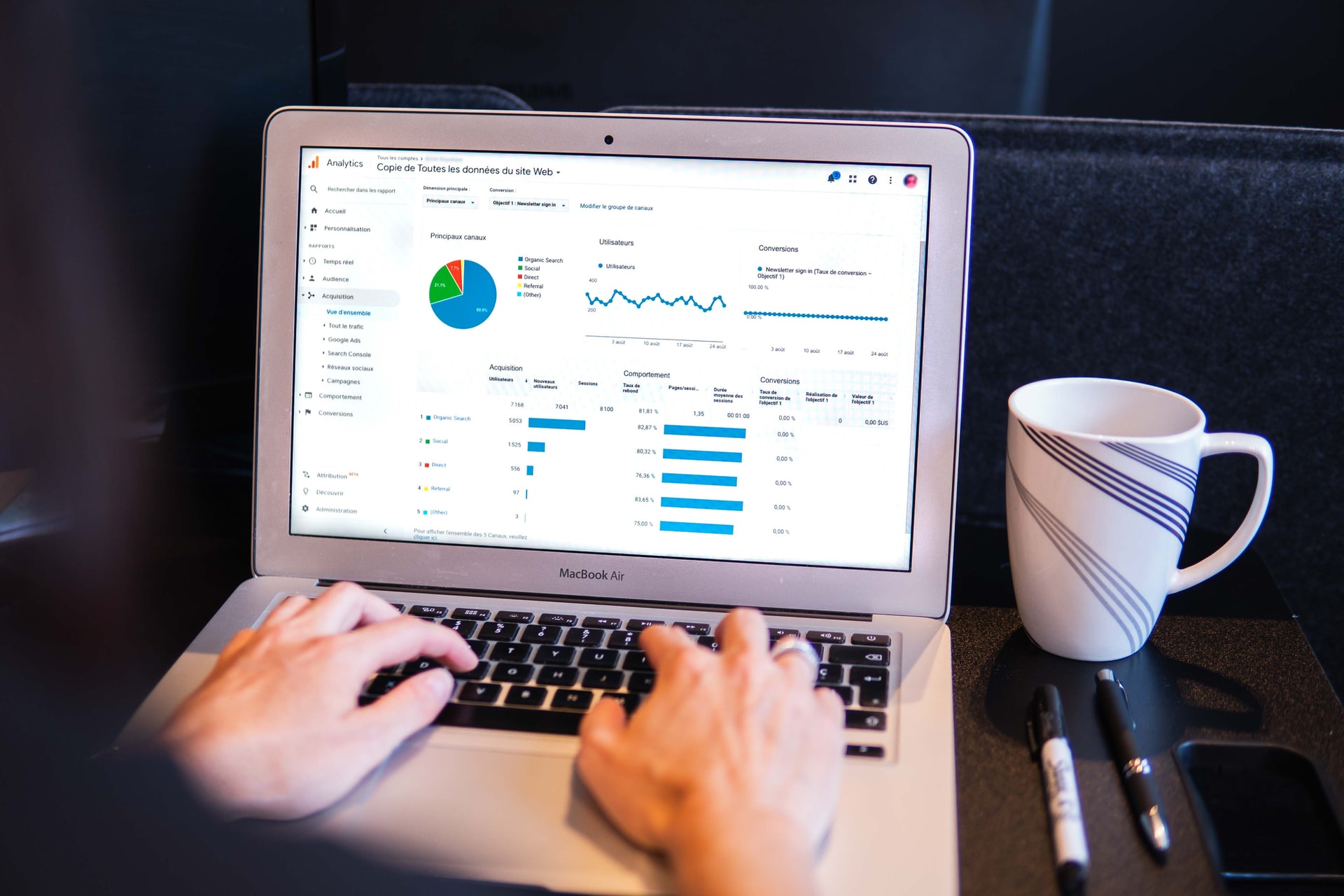Google Analytics is changing. Again.
This time, the change is more than just a new version number. GA4 (short for Google Analytics 4) is built on events, whereas Universal Analytics was based on sessions. What does that mean for your marketing? And how do you set up GA4? A thorough review of GA’s new features is in order.
A Change from Universal Analytics to Event-Based Data
Event-based tracking is the first and most apparent difference between Universal Analytics and GA4. This is a fundamental change in how data is primarily collected. With Universal Analytics, a page view was recorded every time someone loaded your website. This resulted in the number of sessions, the average session duration, and the pages per session.
With GA4’s event-based tracking, a page view is no longer the primary unit by which we measure web traffic data. Instead, a visitor’s actions — or, more specifically, the actions that really matter — are tracked. This results in a collection of event data that can give you deeper insights into user behavior and the effectiveness of your website than session data can.
Over the long term, this change should empower marketers to make more informed decisions about website design and optimization by using this more robust and useful event-based data.

Machine Learning is the New Primary Form of Data Measurement
Much of the way we measure and analyze data today (including web traffic and user engagement) is automated through complex artificial intelligence routines and machine learning algorithms.
The influence of AI and machine learning on how people use the internet is significant and, in turn, has an enormous impact on how website owners and marketers measure success. With machine learning, data can be collected and analyzed in real-time in highly sophisticated ways.
Artificial intelligence collects data and analyzes it to determine what events are essential. It can do so faster and more objectively (albeit sometimes less intuitively) than a human being. By using “modeling” or “learning” algorithms, artificial intelligence can identify patterns in data and then make valuable, actionable predictions about future events, website traffic, and user behaviors.
Machine learning will also allow for more accurate attribution modeling, making it easier to understand users’ paths from initial click to converted sale. Combining machine learning and event-based tracking in Google Analytics will give you a much more detailed view of how users interact with your website.

A Complete Comprehension of the Customer Journey Across Devices
The customer journey is no longer a simple path from awareness to purchase.
With the rise of devices like the Amazon Echo and Google Home, customers can conduct internet shopping by simply saying the phrase, “Alexa, buy more toilet paper.”
Or they can download any number of shopping apps, visit web-based shops, or click a social media advertisement to start the process of finding and purchasing a product, and may do so on any number of internet-enabled devices beyond computers and phones.
Understanding customer behavior across devices is essential for creating a well-rounded customer journey and improving the customer experience. The introduction of the Google Analytics cross-device measurement tool is a step in the right direction.
Cross-device measurement will allow for a complete comprehension of customer behavior and how it is affected by its use.

“Future Proof” from Cookie Blockers or A Digital World with No Identifying Data
The main goal of Google Analytics has long been to provide actionable insights for marketers. With the rise in cookie blockers and data privacy laws, will it still be possible to track users effectively in the future?
One of the benefits of event-based tracking is that it does not rely on cookies or highly personal identifiers. This means that GA4 will still be able to collect data, even if cookies are blocked. This will allow website owners and marketers to continue collecting valuable information about their users despite the recent trend away from using intrusive cookies to track users.
Google is also taking steps to ensure that data privacy laws will not impede GA4’s ability to track website activity. In the summer of 2020, Google introduced Privacy Sandbox, a set of open standards designed to enhance privacy on the web without sacrificing user experience.
The goal of Privacy Sandbox is to allow users to access the web anonymously and with more control over their data. It can also help websites collect data without violating data privacy laws.

No More Editing On-Site Code to Manage Events
Previously, on-site code had to be edited for tracking custom events. However, with the release of GA4, you can now manage event tracking through the Google Analytics interface.
This will empower marketers to customize and manage how events are tracked in their Google Analytics account without requiring advanced coding knowledge or other development skills. This has been a welcome change for non-technical marketing professionals who sometimes had to rely on third-party developers to make changes to their websites to use Google Analytics effectively.
With the ability for anyone to manage events directly through the Google Analytics platform, marketers can now quickly and easily create new events, change the way events are tracked, and fix any errors that may occur.
Data Imports Are Now More Flexible
Previously, data imports in Google Analytics were limited to website data. However, with GA4’s release, data imports can now include app and offline data.
This will allow for a more complete view of the customer journey across all platforms. All of this can happen within one familiar platform, making it easy to manage, track, and analyze your data. Moving forward, it will be interesting to see how data imports from different sources might be used to improve marketing strategies.

Introducing The Lifecycle Report
The new Lifecycle Report is one of the most exciting updates to Google Analytics. It provides insights into how customers interact with a website at different customer journey stages. The Lifecycle Report is broken down into three sections: Acquisition, Engagement, Monetization, and Retention.
- Acquisition: This section of the report provides insights into how customers find a website. It includes data on where traffic is coming from, what channels are being used, and how customers convert.
- Engagement: This report section provides insights into how customers interact with a website. It includes data on how much time customers spend on a website, what pages they are visiting, and how they interact with content.
- Monetization: This report section provides insights into how much money a website generates. It includes data on revenue, average order value, number of transactions, and shopping cart abandonment.
- Retention: This section provides insights into how often customers return to a website. It includes data on customer loyalty, repeat visits, and customer lifetime value.
The Lifecycle Report is a valuable tool that can measure the effectiveness of your marketing content and overall strategies at every step of the process. You can then use this data to make any necessary adjustments to your website design or internal processes, an essential aspect of managing any successful web-based business.
The Future of Google Analytics
Google has been making many changes to Google Analytics over the past year. These changes have responded to the General Data Protection Regulation (GDPR) and the demand for more innovative and user-friendly data analytics and marketing tools.
An improved understanding of user behavior will help website owners thrive in all phases of the digital world, such as by better understanding and mastering SEO, as one example.
As we move into the future, we expect Google Analytics to continue to adopt new technologies and features that make data analytics more user-friendly, intuitive, and effective.
